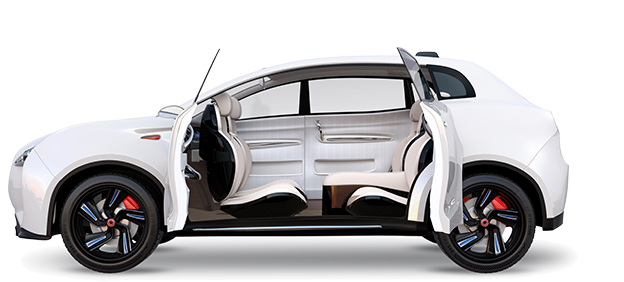
Where are all the flying cars, or the endless lanes of self-driving vehicles, cars that look more like lounges with cocktails and couches?
We all have high expectations for the exciting future of driving that we’ve been promised in movies and Elon Musk’s Twitter feed, and yet things can feel like they’re going at a slower pace.
This article will show just how far cars have come and how the Internet of Things technology has already been implemented in modern vehicles. This will be demonstrated by exploring a bit of history and some of the companies already behind this, illustrating how we might be a lot closer than you think to that distant future.
First Tech in Cars
To start with, flying cars are probably not happening any time soon. However, AI technology, self-driving and even cyber hackers taking control of said cars are already on the horizon. Behind all of these prospects are implemented technologies found within new cars.
The Internet is an aspect of everyone’s lives from our phones to televisions, and yes, even your car. Just like the evolution of other products car technology has been implemented in different stages.
You might be surprised to know that as far back as 1966 car company GM had a dashboard system to send an emergency message from the car to the service centre, which featured automatic messaging of road conditions, and had an automatic sign and road hazard detector.

The Driver, Aid, Information and Routing (DAIR) system relied on stationary magnets buried beneath the road every three to five miles, working with roadside communication modules to let a service centre know you were in trouble based upon the time between the signals.
The system even had an early form of GPS… before there were satellites. Using the same magnet system and a special card with the destination ‘punched’ in like a time card, various intersections would cause the console to flash a light for either left, right, or straight.
Birth of the GPS
This was of course very high-end and difficult to implement into a time when cars were aiming for affordability, but it laid the ground work for what was possible. Going ahead a few decades with some trial and error and the huge expansion of new technologies, by 1994 we had the BMW 7 series E38. This was the first European model featuring GPS navigation.
The normalisation of such technology, typically fitted into the car itself, is what’s known as the ‘embedded era’. The Internet of Things is part of the car itself. Even people with older cars without built-in GPS often use standing ports for their smart phones to use an online map system, just another way to integrate Internet to their cars.
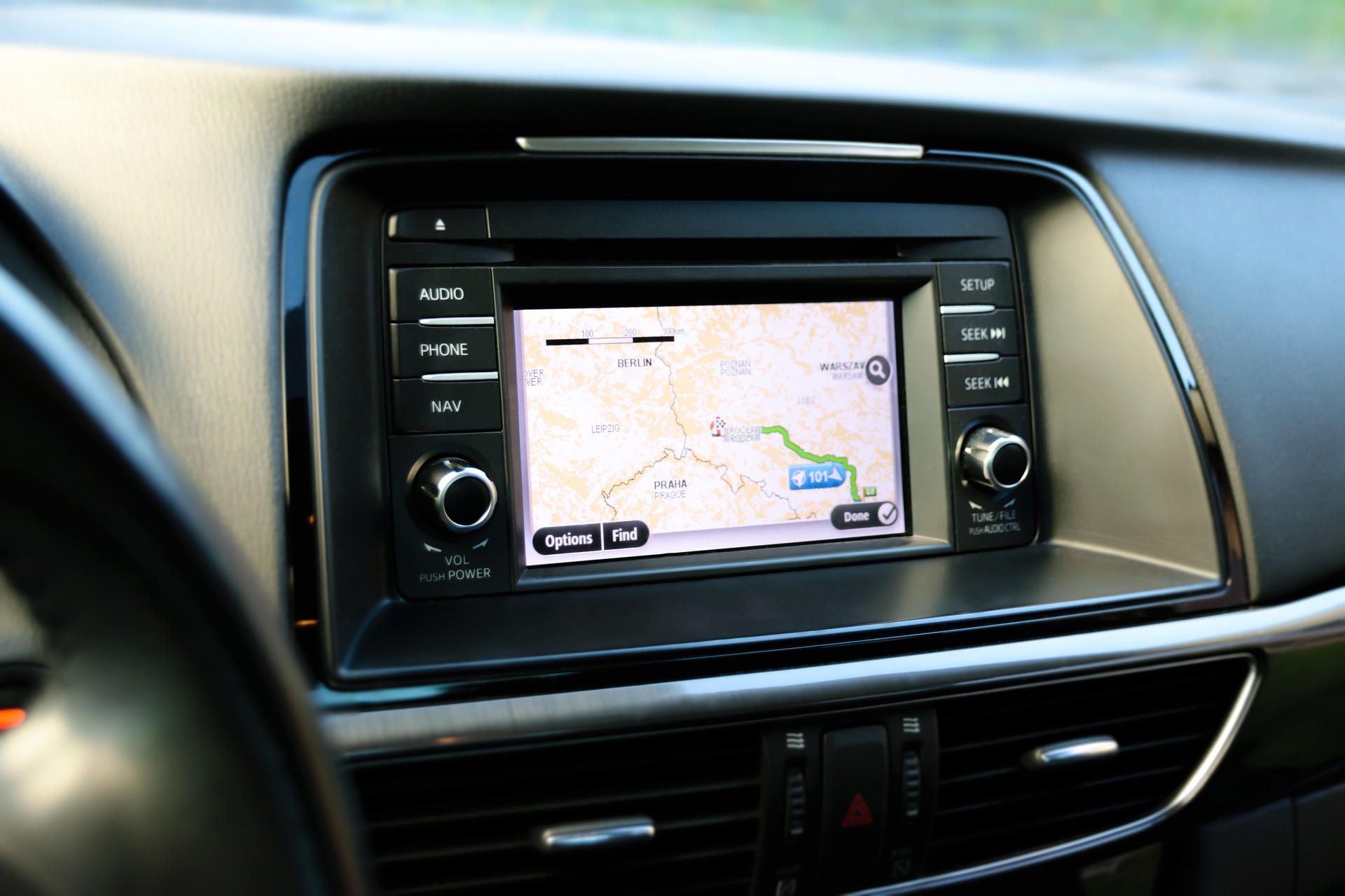
But it is not just GPS that comes with Internet and driving. Going back to embedded systems, the next big stage was what was known as the infotainment era.
Simply put between 2007 to 2012 the Internet capable built-in screens were on a rapid rise, quickly integrating the GPS, music, movies, traffic updates etc.
Implementing Music
Much like GPS the technology dates a while back – all the way to the first radio being built into a car in 1930. In fact you could argue that the first ‘data’ storage in cars was was way back in the 1940s and 50s when mechanical were inputted to the radio to save a favourite station.
For decades after analogue data storage in the form of cassettes and CD’s were the common practice. As popular and compact as they were though it still required physical space and had limited memory, requiring 6 disc players and upgrades to DVD discs for more data storage.
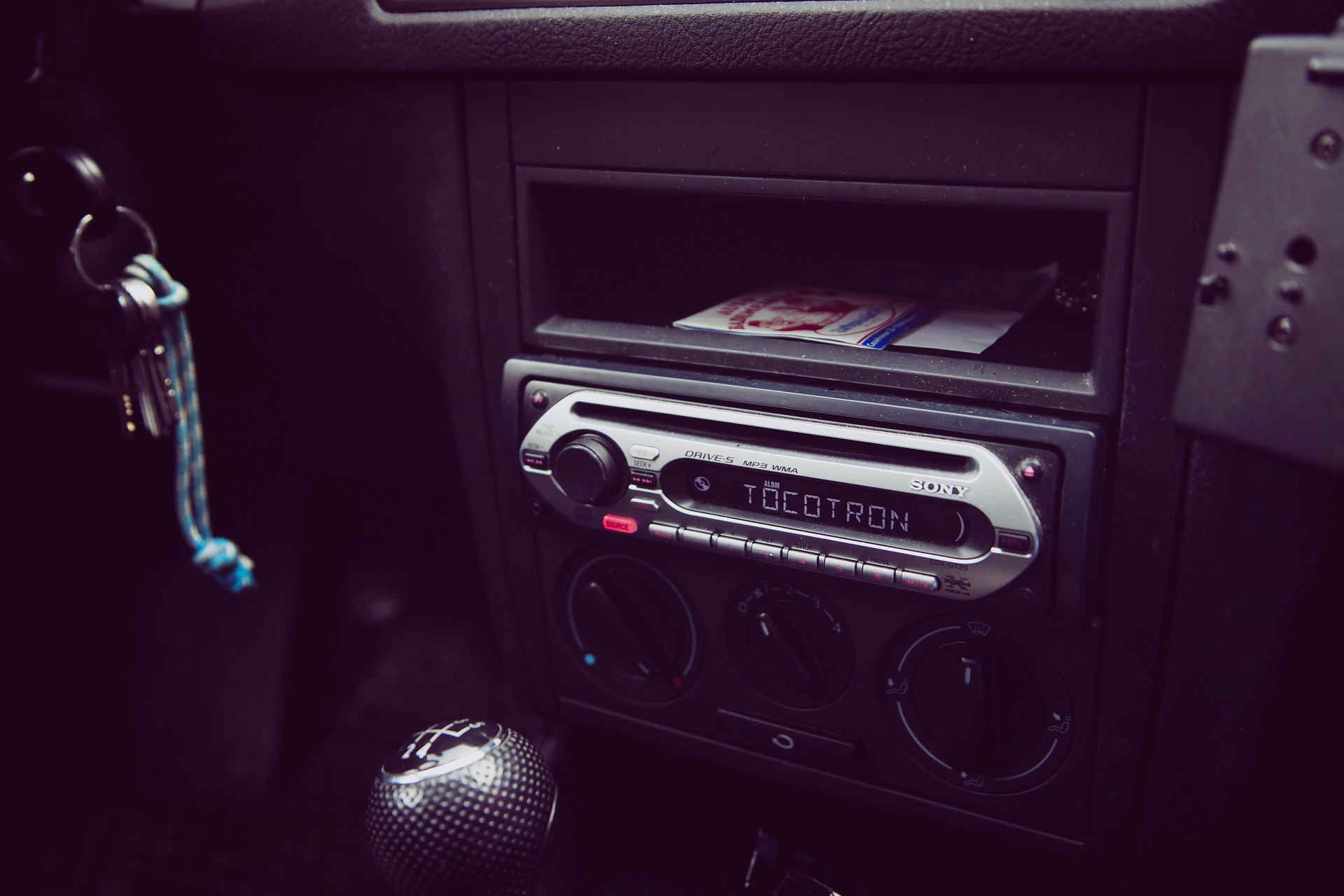
It was in the early 2000’s that IVI emerged – systems to play music, GPS navigation assistance, Bluetooth capabilities and by 2006 they even had USB slots for MP3 players.
It is the industry standard to this day to use IVI systems for in-built music and GPS etc. However in recent years we have entered a new age.
The Age of Internet and Cars
It’s difficult to definitively differentiate each stage of car tech because, as pointed out, a lot of the newest technology can be traced decades ago. However, the common word for where connected cars are now is the ‘Vehicle-to-everything’ or V2X era.
The name illustrates how crucial the Internet of Things is now to the modern vehicle. We are at the stage where the goal is to pass information from a vehicle to any entity that might affect said vehicle, including other cars.
As stated, a lot of this began simply with GPS and Infotainment systems. But the key to such a standard in the industry is not just the new and more varied services this provides, but also the ability to collect data.
Before getting into that though it’s worth noting some of the standard features the Internet of Things has brought cars in recent years and the various entities the car connects to.

A large development includes 4G Wi-Fi hotspots that companies such as Chevy started offering in 2014 in the Malibu 2015 Model, so passengers can connect their phone to the car’s Internet. In fact it’s now easier than ever in connected cars to use IOS and Android phone apps through the infotainment system.
Internet radio such as podcasts and streaming services are also becoming more common in new vehicles while hand-free voice controls are helping in implementing these safely, simply stating ‘play playlist 1’ can activate music in some connected cars, for example. It goes without saying that hands free calling is not only necessarily legal but far easier with Bluetooth and Internet apps such as Face Time and Whatsapp.
And speaking of safety, navigation and roadside assistance are still key with more accurate and real-time notifications about traffic jams, potholes, debris on the road and collisions. Other notable enhances is computerised engine diagnostics – warning drivers when the motor, fuel motor or battery are about to fail.
Data and Machine Learning
Data capture is currently where a lot of companies involved with the Internet of Things and automotive are focusing. Data can come in all forms and if there is, say, something like a GPS in the car then data can be stored to determine preferred routes, petrol stations, and even preferred times to visit frequent locations.
Coupled with how the vehicle itself performs there is now opportunity and expansion on machine learning, a form of artificial intelligence, that can both read the performance of the driver, the car, and apply this information to the roads ahead.
To give a clearer idea of what’s possible and what’s in development here are just a few new companies focusing on data and machine learning in the automotive Industry.
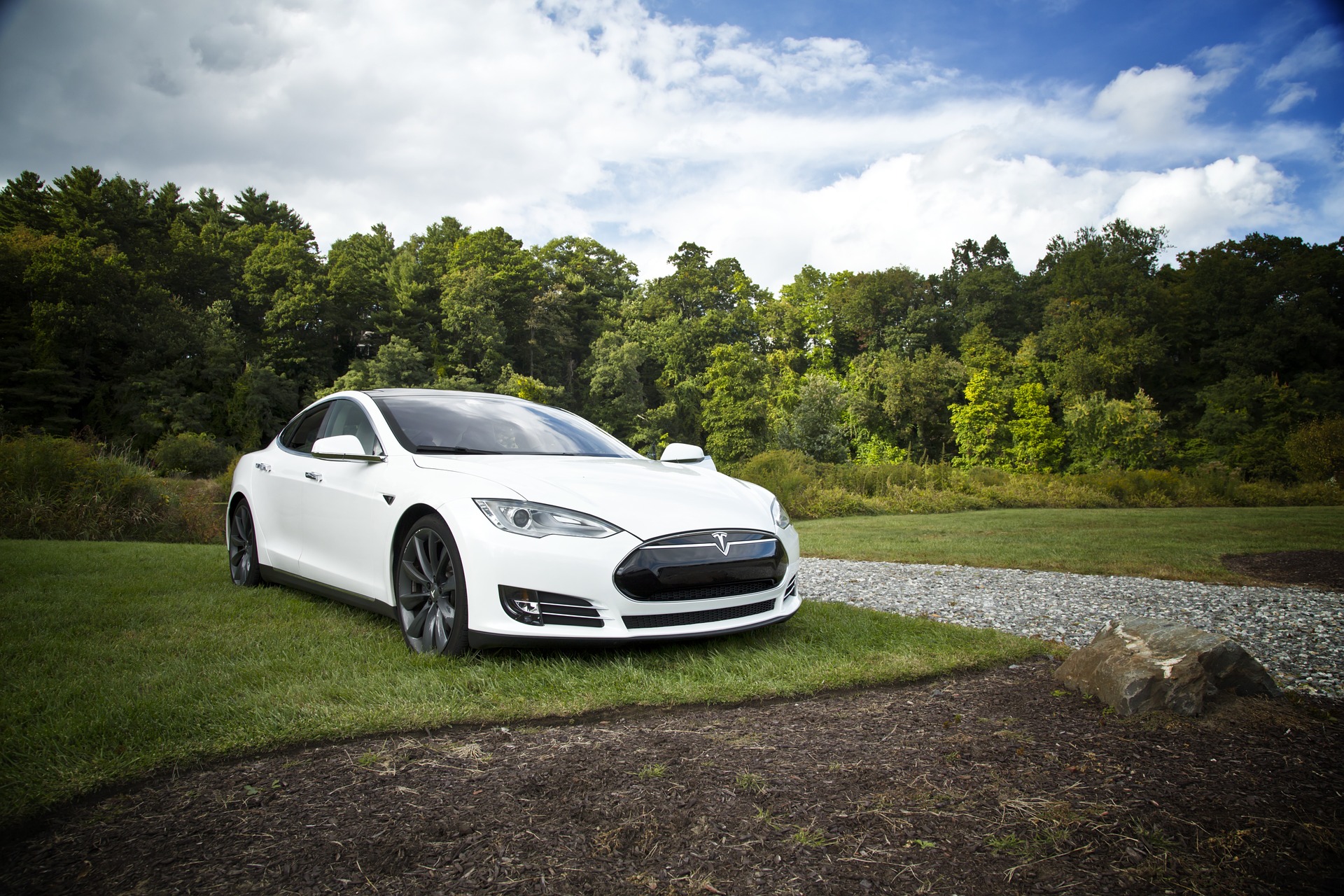
You might think this would include the big car manufacturers like Tesla or BMW who have strong strategy for electric cars. However, as Tesla themselves state in their recent Strategy Update:
“However, while discussions around Tesla tend to generate more heat than light, there are a few hard facts to which this report can turn, in developing a forecast for the five years to 2022. These include the fact that Tesla is a car maker, not a digital or software company as some have suggested. As such, its expansion is subject to the same constraints as all other carmakers.”
While big manufacturers implement Internet of Things into their cars, much of the software in car manufacturing is being pioneered in the tech world. That’s not to say that the big companies are not working on engineering new types of vehicles, including AI and self-driving.
The point is, startups and established tech companies are hard at work creating newer algorithms, using data and machine learning to improve both car and driver – and this is not in the future, it’s already being adopted by the automotive industry. Here’s just a few:
Carfit – machine learning
CARFIT is a US based software development company that focuses on the car manufacturing, auto service, mobility services (taxis, busses etc), and insurance side of automotive. They monitor everything from the steering wheel to the shock absorbers collecting data on the car’s performance and giving real time analytics on a customized dashboard for your computer.
This kind data analysis is known as ‘machine learning’, not necessarily a new method, but it is being applied in exciting ways by companies like CARFIT to accurately find otherwise hidden insights into how a vehicle is performing on the road.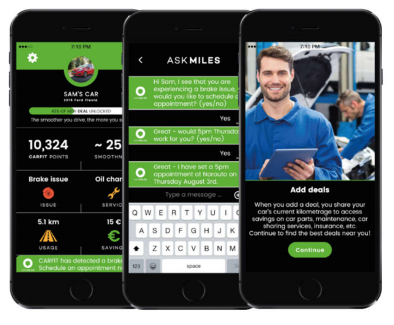
ZenDrive – data analysis
This is another software company that analyses the driver rather than the car itself. Their focus are on companies and businesses who operate a fleet of cars. Using only phone sensors they monitor the driver’s caution, control and focus on the road as well as detect collisions.
This might sound a bit Orwellian but with 90% of collisions resulting from human error in a professional capacity this future service aims to save lives. Besides, the company states that data collection is anonymous in the sense that they do not have on record the individual driver information, but rather the performance of the fleet overall.
Data collection such as this will provide valuable insight into how autonomy in cars might be improved and help use technology to limit human error.
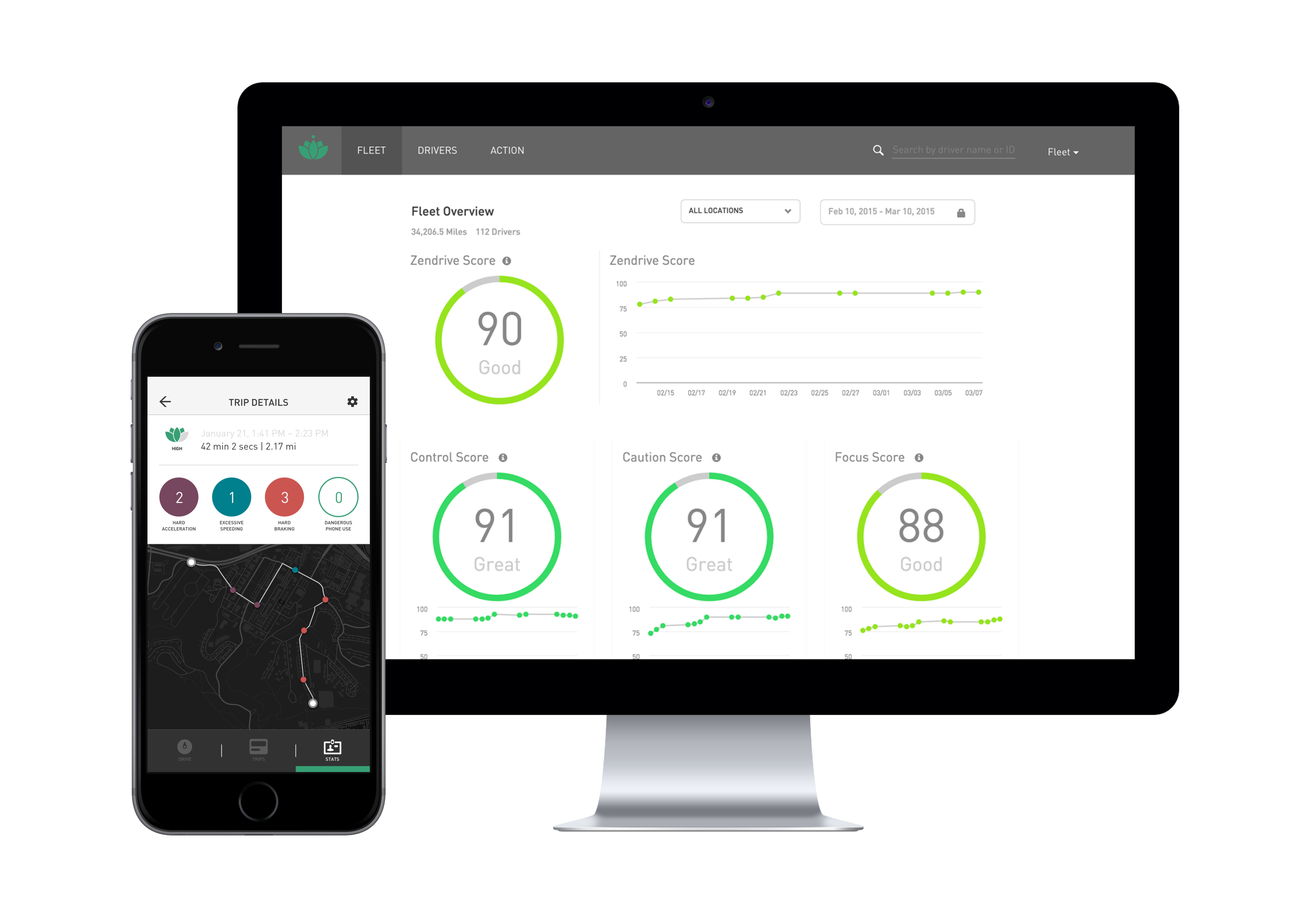
Karamba – cyber security
With connected cars come certain risks. Using Internet connection to monitor different mechanics of the car enable hackers to mess with the system. Another risk is a malfunction doing something dangerous like letting off the airbag during driving. US based company, Karamba, works with autonomous automotive security to prevent any threats or malfunctions to the car’s performance. They install a firmware into the Engine Control Unit that never needs an update and runs 24 hours a day, monitored by the company itself.

Artificial Intelligence on the Horizon
Although it’s beyond Internet of Things and connected cars, AI should certainly be mentioned as this article closes. Companies such as Nissan, Tessla, Google, and Bosch are working relentlessly to train on board computers that can become aware of their surroundings.
This is done is much in the same way – data, data, data. Countless runs are done so the AI in a car will know to slow down if it spots an obstacle, such as a ball coming onto the street, knowing to slow down in case of a child running into the road.
The cars also need to ‘see’ in a sense with cameras fitted to differentiate between biological and inanimate. For example, Bosch is experimenting with a camera with a high resolution of 1280 x 960 pixels – in 3D. Not only this but the AI also needs to compare the images instantaneously with previously captured data including radar and ultrasonic signals, collected with over dozens of different sensors.
We are not quite at the stage where we will all be driven by own cars. However, just as radio and magnets have brought us infotainment and GPS systems, the current technology linking Internet to your car is going to be the necessary building blocks that will get us there sooner than we might imagine.
By Ed Sherrington